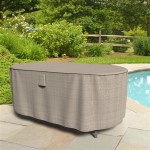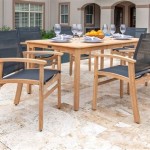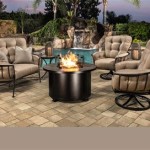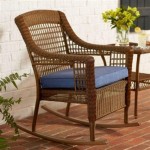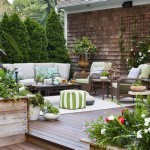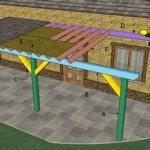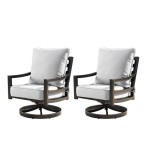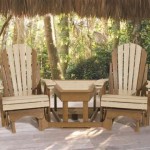Building A Deck Over An Existing Patio Slabs In Indonesia
Building a deck over existing patio slabs offers a way to revitalize outdoor spaces. This approach can be particularly appealing in Indonesia, where existing concrete patios are common. Building a deck directly over the slabs provides a level foundation, reducing construction time and cost compared to starting from scratch. This article will explore the considerations and steps involved in building a deck over existing patio slabs in Indonesia's tropical climate.
Assessing the Existing Patio:
The first step is a thorough assessment of the existing patio. Inspect the slabs for cracks, unevenness, and drainage issues. Ensure the patio is properly sloped to prevent water accumulation under the deck. Significant cracks or drainage problems must be addressed before proceeding with deck construction. This might involve patching cracks, re-leveling the slabs, or improving the drainage system. In Indonesia's humid climate, proper drainage is crucial to prevent mold and mildew growth.Choosing Deck Materials:
Selecting appropriate materials is essential for a durable and resilient deck in Indonesia’s climate. Tropical hardwoods like teak, ironwood, and merbau are naturally resistant to rot, insects, and weathering, making them ideal choices. Composite decking materials, though potentially less expensive, offer comparable durability and often require less maintenance. For the framing, pressure-treated wood is necessary to protect against termite damage and decay. Stainless steel fasteners are recommended due to their corrosion resistance in humid environments.Framing and Support:
The deck frame provides the structural support for the decking boards. Building codes in Indonesia, while possibly varying regionally, should be consulted to determine necessary joist spacing and beam sizes. The frame can be built directly on the existing slabs using concrete anchors or pedestal supports. Pedestal supports offer the advantage of elevating the deck, further promoting airflow beneath and aiding drainage. This elevation also allows space for running electrical wiring or plumbing if required for outdoor lighting or water features.Ensuring Proper Ventilation:
In Indonesia's humid climate, adequate ventilation beneath the deck is critical to prevent moisture buildup, which can lead to wood rot and structural damage. Leaving gaps between the decking boards allows for airflow. Alternatively, using specialized decking boards with built-in ventilation gaps can achieve the same effect while maintaining a smooth surface. The space beneath the deck should also be kept clear of debris and vegetation that could impede airflow.Protecting from the Elements:
While durable materials offer inherent weather resistance, additional protection can extend the lifespan of the deck. Applying a sealant specifically formulated for tropical hardwoods or composite decking provides a barrier against moisture, UV radiation, and mold growth. Consider incorporating a roof structure or pergola to offer shade and protection from rain, further enhancing the usability and longevity of the deck.Local Regulations and Permits:
Before commencing construction, it’s essential to research local building regulations and obtain any necessary permits. Requirements may vary between regions and municipalities within Indonesia. Consulting with local authorities ensures compliance with building codes and avoids potential legal issues. This step also provides an opportunity to clarify any specific requirements related to building on existing structures.Engaging Local Contractors:
Engaging experienced local contractors is highly recommended. Local contractors possess knowledge of local building practices, materials, and regulations. They can also advise on appropriate materials given the specific climate conditions of the region. Furthermore, they will have established relationships with local suppliers, which can facilitate sourcing materials efficiently.Maintenance Considerations:
While choosing durable materials minimizes maintenance, regular upkeep is essential to preserve the deck's appearance and structural integrity. Periodic cleaning with a mild detergent and water removes dirt and debris. Reapplying sealant every year or two, depending on the product and local conditions, helps maintain the protective barrier against the elements. Regular inspections for signs of damage, such as cracks, rot, or insect infestation, allow for prompt repairs, preventing more extensive problems later.Building a deck over an existing patio offers a practical and aesthetically pleasing way to enhance outdoor living spaces. By carefully considering material choices, ventilation, and local conditions, homeowners in Indonesia can create a durable and enjoyable outdoor area well-suited to the tropical climate.

Why Choose Wood Decking Over Concrete Slabs Kaltimber Timber Merchant Flooring
What Mistakes To Avoid When Installing A Terrace On Pedestals Kaltimber Timber Merchant Flooring

Lay Decking With Construction Instructions For The Wooden Terrace

Why Choose Wood Decking Over Concrete Slabs Kaltimber Timber Merchant Flooring

How Is A Wooden Terrace Laid On Slope
7 Reasons Why Installing A Hardwood Decking Should Be Your Next Project Kaltimber Timber Merchant Flooring
7 Reasons Why Installing A Hardwood Decking Should Be Your Next Project Kaltimber Timber Merchant Flooring

Patio Roofs And Covers In Construction What Is The Best Choice For Your Need

Decking Tiles Vs Traditional Decks Pros And Cons

Can You Put Composite Decking Over Wood
See Also

